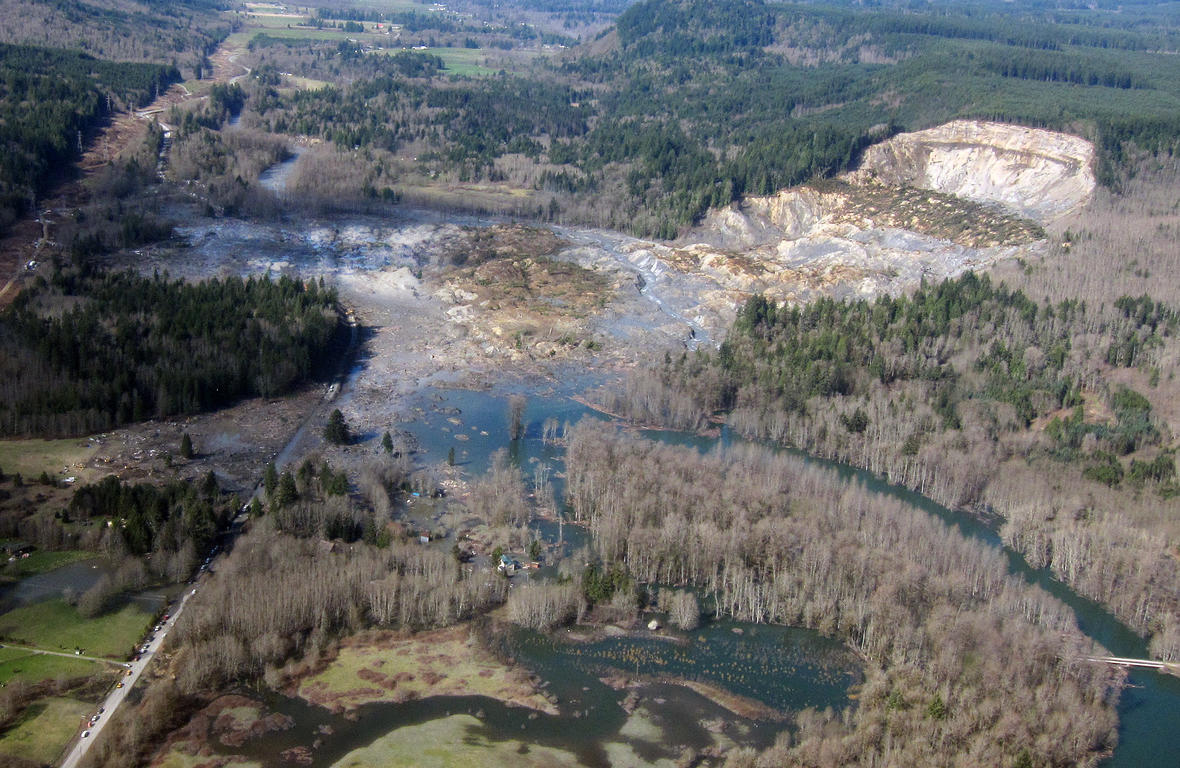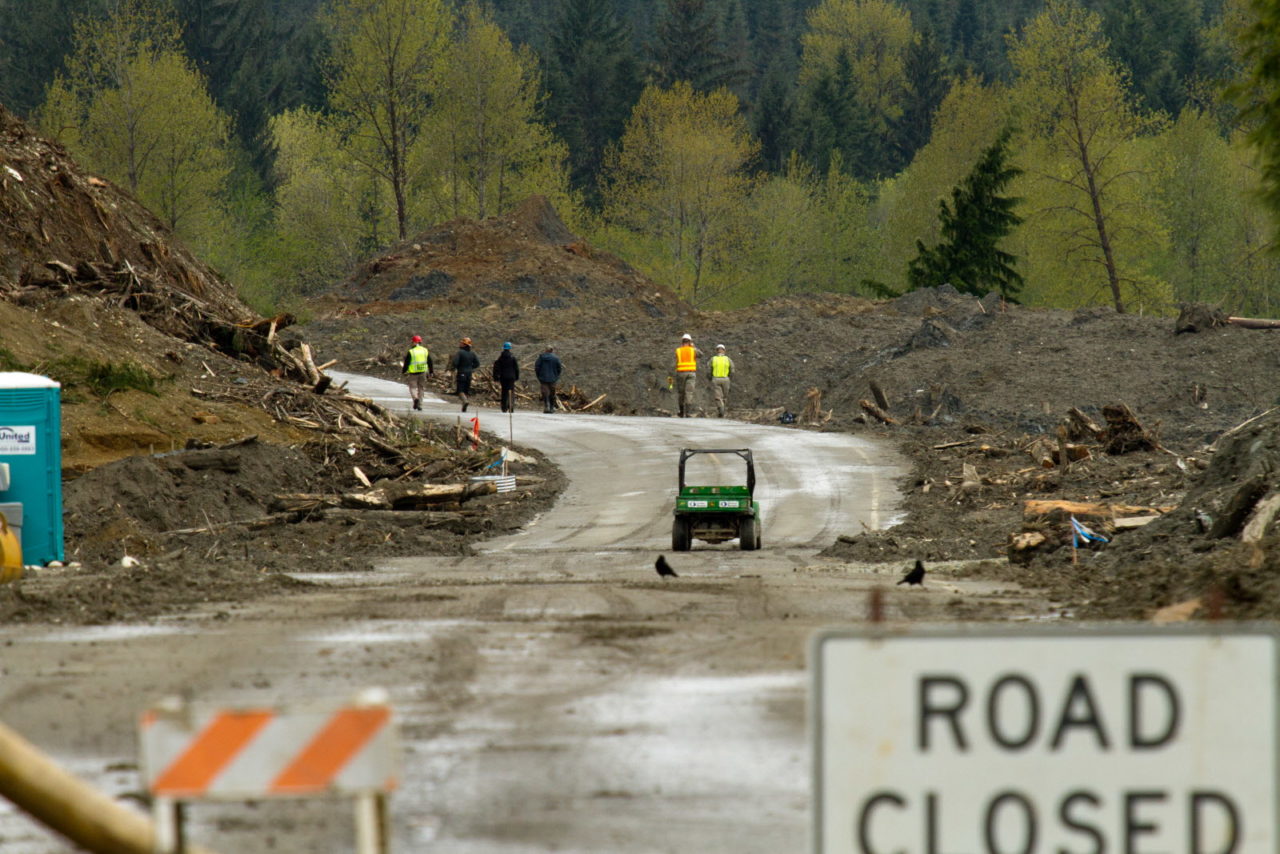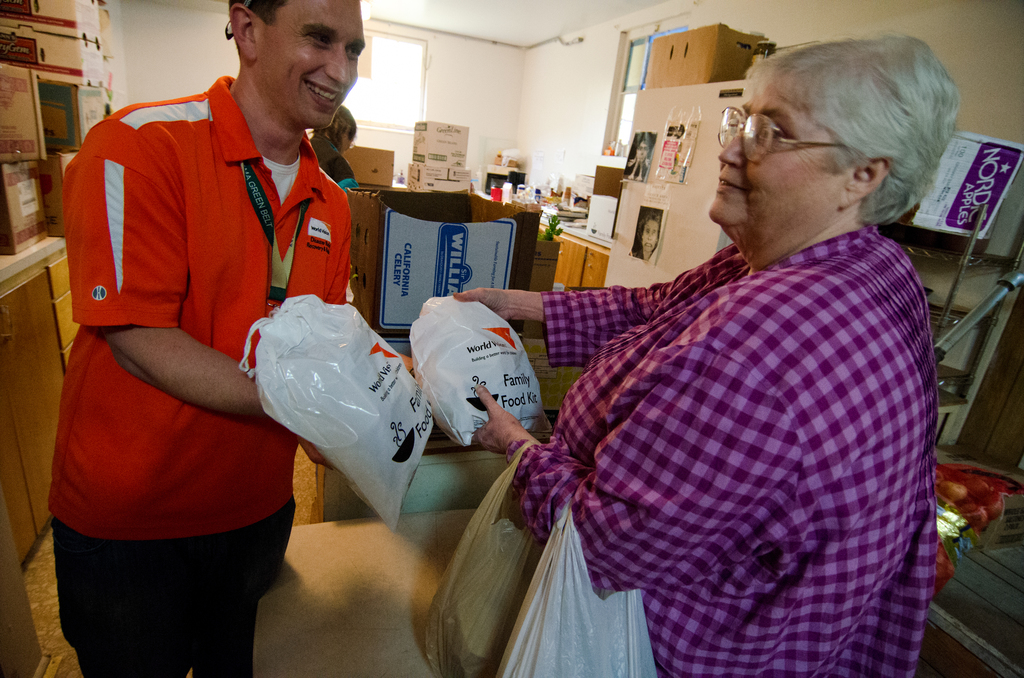
Oso landslide: A community rallies after deadly landslide
On March 22, 2014, the deadliest landslide in U.S. history devastated the rural community of Oso, located 60 miles north of Seattle, Washington. The massive landslide, reaching heights up to 70 feet, engulfed part of the Stillaguamish River and a mile-long stretch of a main thoroughfare, state route 530. Eyewitnesses described a towering wall of mud roaring loudly as it surged through the valley.
The disaster claimed the lives of 43 people and injured 10 others after a hillside above them collapsed, sweeping over their neighborhood in a catastrophic mudflow. Most of the victims were trapped in their homes, and 50 houses were damaged or destroyed.

Causes behind the Oso landslide in 2014
A combination of factors caused the 2014 Oso landslide, including:
- Heavy rainfall: Intense and prolonged rainfall in the weeks before the landslide saturated the soil, increasing its weight and instability.
- Geological conditions: The area had a history of landslides, and the terrain consisted of loose, unconsolidated glacial sediments prone to sliding when saturated.
- River erosion: The North Fork of the Stillaguamish River had a history of erosion, further destabilizing the hillside.

A community rallies in the wake of disaster
The 2014 Oso landslide, also known as the SR 530 landslide, had devastating effects on the local communities in Washington state.
Pastor Gary Ray of Oso Community Chapel shared that almost everyone knew someone who “really suffered,” whether through loss of life or property damage. His church quickly became a vital hub for aid right after the disaster struck.
Once a thriving logging town, Oso faced economic challenges by 2014. Pastor Ray noted that in 2014, “economically, this region is really in decline,” with high unemployment. The landslide’s impact was especially severe for people already struggling financially.
Oso, located on the west side of the slide, received most of the attention and donations due to its accessibility to the Interstate 5 corridor north of Seattle. In contrast, the logging town of Darrington, east of Oso, became landlocked when the mudslide blocked Washington state Highway 530.
Residents of Darrington, many of whom worked, shopped, and accessed healthcare in Arlington, Everett, and other cities to the west, had to take long detours to reach work and services. This added extra strain on families trying to cope with the disaster.
The Darrington Food Bank became a primary place for relief goods on the east side of the slide zone. The mudslide made an immediate impact on many people who relied on the Darrington Food Bank, said Ray Coleman, who helped run the operation in the basement of First Baptist Church. “We went from feeding 500 people per week to over 1,800 per week,” he said. “For a town of 1,300, that’s not insignificant.”
People from beyond Darrington also visited the food bank. Coleman, a retired truck driver, didn’t take a day off from working at the food bank until three weeks after the Oso mudslide. Some had daily round-trip commutes of five hours or more due to road closures. “That’s a tank of gas,” he said.
Leanne Whittle was one of the new food bank customers. She had never needed it before, but after the mudslide, her daily 1-hour round-trip commute to Arlington turned into a 4-hour ordeal. With more money going toward gasoline, she had less money for food.
Recovery efforts and long-term support
Following the landslide, Washington state increased staffing and expanded mapping efforts to assess further risks better. Government officials also tightened guidelines for logging on landslide-prone slopes due to concerns that clearcutting near the top of the affected area might have contributed to the disaster.
In 2021 Congress passed the National Landslide Preparedness Act, which Washington state lawmakers championed. This legislation aimed to create a national strategy for identifying, understanding, and protecting against landslides.

World Vision delivered 300 family food kits to the Darrington Food Bank on April 16 and helped families clean up and rebuild their homes. We also delivered 125 clean-up kits, 156 personal hygiene kits, and 300 family food kits to Oso Community Church on the west side of the disaster site.
Reed Slattery, who was the manager of World Vision’s field site in Fife, Washington, spoke to several homeowners with damaged homes on the Darrington side of the mudslide to understand their needs. Slattery informed one survivor that World Vision would coordinate volunteers to help her remove rotted drywall and donors to provide building materials.
“She was overwhelmed,” said Slattery, now national director of World Vision’s U.S. Programs. “She said, ‘I didn’t know where we were going to turn next.’ I told her, ‘We’re ready to walk with you for the long haul.’”
Our immediate response to the landslide focused on the delivery of basic supplies, Slattery says. Later, World Vision assisted survivors in the area with building materials as they rebuilt their lives and found new places to live.
World Vision’s response to emergencies in the U.S.
In the aftermath of devastating landslides and other disasters in the U.S., World Vision is able to respond immediately, drawing on decades of experience. Our nationwide World Vision Storehouse has seven strategically placed and fully staffed warehouses stocked with prepositioned supplies for rapid delivery during emergencies.
Working closely with local agencies and a network of over 3,600 U.S. partners, we assess needs, evaluate damage, and distribute critical supplies. Our focus includes identifying and prioritizing the hardest-hit areas where other organizations may be limited. Beyond immediate relief, we commit to long-term support, helping families, churches, and communities throughout the rebuilding process. While aiding impacted communities, we invite Pastor Ambassadors to come alongside our response by offering firsthand experience, prayers, guidance, and mentorship.
During the fiscal year preceding the Oso disaster, World Vision provided aid to nearly 80,000 people in the aftermath of six U.S. disasters. These disasters included Superstorm Sandy in New York and the deadly tornadoes near Oklahoma City.
How can I help families impacted by emergencies like the Oso landslide?
- Pray: Join us in praying for all those who are affected by disasters in the U.S.
- Give: Your gift will help deliver hope and help amid emergencies in the United States.
John Iwasaki of World Vision’s staff in the U.S. contributed to this article.
EIN Presswire does not exercise editorial control over third-party content provided, uploaded, published, or distributed by users of EIN Presswire. We are a distributor, not a publisher, of 3rd party content. Such content may contain the views, opinions, statements, offers, and other material of the respective users, suppliers, participants, or authors.

